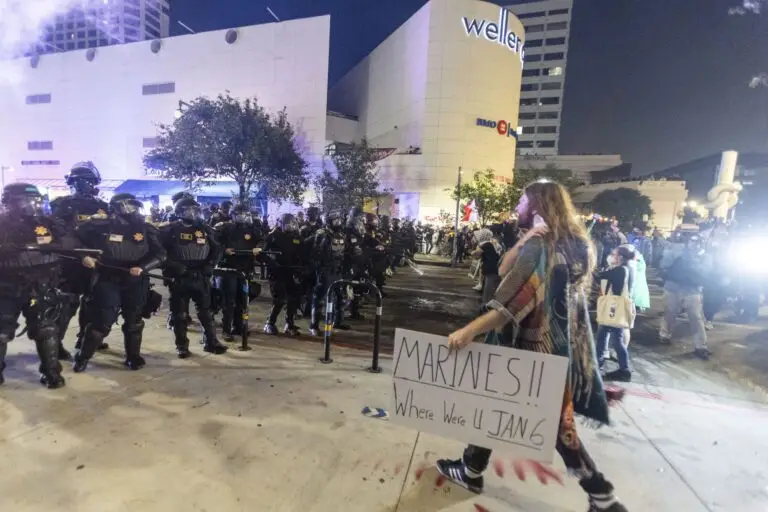WASHINGTON, D.C. — June 11, 2025 — Tensions across the United States are boiling over as federal immigration raids, spearheaded by an emboldened White House, have ignited a nationwide firestorm of resistance, constitutional concerns, and civic unrest.
What began as isolated demonstrations in California last week has now surged into a coast-to-coast protest movement, with cities from Seattle to Miami witnessing rallies, vigils, and—at times—confrontations with federal officers.
At the epicenter of this national standoff is President Donald Trump’s aggressive mobilization of military-grade resources against undocumented migrants. Critics say the president has hijacked immigration enforcement to fortify political dominance, leveraging federal muscle in defiance of state authority.
Troops in the Streets, Governors on Edge
The streets of Los Angeles remain tense following an unprecedented deployment of Marines, marking the first use of active-duty combat troops in a major U.S. city since the 1992 Rodney King riots. Despite objections from California Governor Gavin Newsom, who denounced the move as “an authoritarian overreach,” Trump pressed forward.
“This isn’t about criminals. This is about control,” Newsom stated Wednesday night, accusing the administration of “weaponizing immigration policy to crush dissent.”
Elsewhere, National Guard units were activated in Texas, Arizona, and Georgia, as Republican governors signaled full alignment with Washington. Democratic governors, however, are refusing to cooperate, prompting a potential constitutional showdown over state sovereignty.
Protesters Mobilize Across the Country
The backlash has been swift. On Tuesday night, more than 20,000 protesters marched through Chicago, while thousands gathered outside ICE detention centers in Denver, Boston, and Philadelphia. In New York, the Brooklyn Bridge became a sea of signs and chants calling for the resignation of key Homeland Security officials.
Organizers have dubbed Saturday’s coordinated national protest “The Liberty Line,” a nod to historic resistance movements. The date coincides with a highly publicized military parade in Washington, D.C.—a Trump-orchestrated event that critics label a thinly veiled campaign stunt.
The Parade, the Power, the Provocation
The parade, featuring tanks, flyovers, and elite military displays, will mark the Army’s 250th anniversary. However, its alignment with Trump’s birthday has drawn ire and suspicion.
“This is not a celebration of the military,” said former Pentagon advisor Eli Mendoza. “It’s a show of power, and the message is clear: dissent will be met with force.”
The Department of Justice has confirmed it is reviewing emergency powers that could allow broader surveillance and indefinite detention of migrants deemed a “national threat.”
A Nation on the Brink
Legal scholars warn that the administration is treading dangerously close to violating the Posse Comitatus Act, which restricts the use of the military in domestic law enforcement.
“This is a test—of the Constitution, of federalism, and of civil society’s resilience,” said constitutional law professor Dana Wexler of Georgetown University. “The guardrails are shaking.”
Meanwhile, in Atlanta, Phoenix, and Sacramento, immigrant families live in fear of surprise raids and disappearing neighbors.
“ICE took my uncle while he was walking to work. No explanation, no warrant,” said Ana Gutierrez, a 19-year-old student who joined protests in downtown Houston. “This isn’t law enforcement. It’s persecution.”
As dusk falls each night, helicopters circle cities, and protesters brace for flashbangs and tear gas. With no sign of de-escalation, America now finds itself gripped by a moral and political battle that may well define the era.

